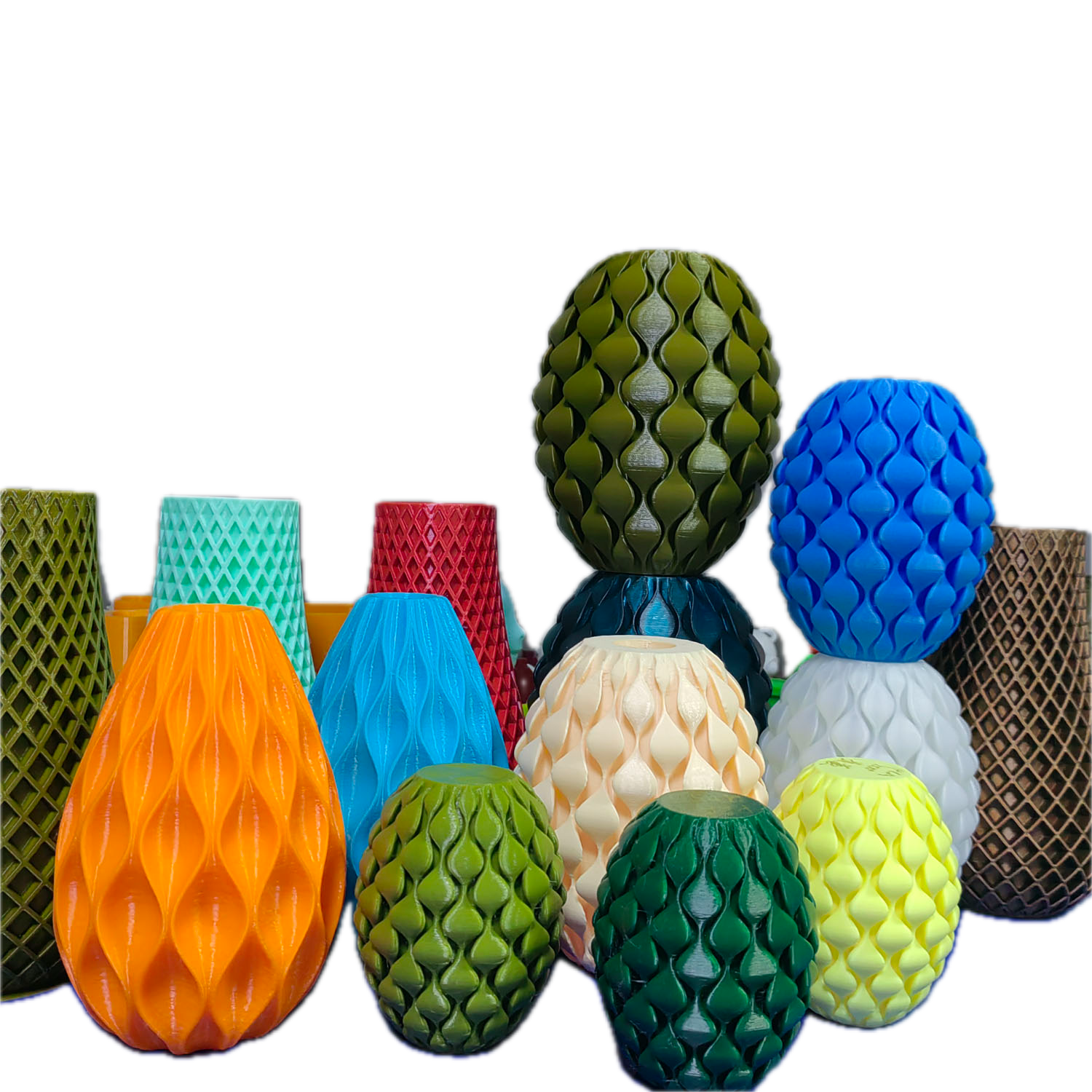
How to Print Crystal-Clear Transparent Filament: Step-by-Step Guide
Share
Chasing that glassy, see-through finish? Printing truly crystal-clear parts on an FDM printer is possible — but it takes the right filament, careful slicer settings, and smart post-processing. Below is a practical, step-by-step guide you can follow at home, plus a few excellent YouTube walk-throughs embedded for easy reference.
Why clear prints look cloudy
- Light scattering from visible layer lines, seams, and internal voids.
- Moisture in filament causing micro-bubbles as water flashes to steam.
- Cooling that’s too aggressive, frosting the surface.
Slower, hotter, thicker extrusions with aligned internal paths reduce scatter and can dramatically improve clarity. :contentReference[oaicite:0]{index=0}
Step-by-step settings (quick start)
- Choose the right material: Clear PETG or PCTG are popular for transparent parts thanks to layer bonding and optical properties. PLA can work but is less forgiving. :contentReference[oaicite:1]{index=1}
- Dry the filament: 45–60 °C for several hours (PETG/PCTG on the higher end). Moisture causes bubbles → haze. :contentReference[oaicite:2]{index=2}
- Nozzle & bed temps: Print hotter than usual (e.g., PETG ~245–260 °C) to fuse layers; keep the bed in spec for your brand. :contentReference[oaicite:3]{index=3}
- Layer height: Go thicker (e.g., 0.28–0.4 mm with a 0.4–0.6 mm nozzle). Fewer interfaces = fewer scatter planes. :contentReference[oaicite:4]{index=4}
- Perimeters & top/bottom: Use 1 perimeter, 0 top/bottom layers, and rely on 100% infill with aligned rectilinear lines to create a continuous, lens-like interior. :contentReference[oaicite:5]{index=5}
- Infill: 100% rectilinear (all lines parallel) or concentric, aligned with the optical path you want. :contentReference[oaicite:6]{index=6}
- Cooling: Little to none (0–10%) so extrudate stays molten long enough to self-level. :contentReference[oaicite:7]{index=7}
- Speed: Slow (e.g., ~15–30 mm/s) to minimise voids and improve flow consistency. :contentReference[oaicite:8]{index=8}
Watch: transparent printing techniques
Advanced tuning
- Nozzle size: 0.6–0.8 mm can help lay down fatter beads that merge more cleanly.
- Flow calibration: Slightly increase flow (e.g., 102–105%) to reduce internal gaps — test with calibration pieces. :contentReference[oaicite:12]{index=12}
- Z-seam strategy: Hide or randomise seams away from the optical window.
- Annealing (material-dependent): Can relax internal stress and improve clarity; test small first.
- Vendor profiles: If you’re on a Bambu, try their community/wiki transparent profiles as a baseline. :contentReference[oaicite:13]{index=13}
Post-processing for “wow” clarity
- Wet-sand progressively (e.g., 600 → 1000 → 2000 → 3000+ grit), keeping the surface flat.
- Polish with plastic polish or a clear coat to reduce surface scatter. :contentReference[oaicite:14]{index=14}
- Design for transparency: Use gentle curves and continuous wall paths; avoid abrupt geometry that traps air.
Filament picks from Zextrude
For crystal-clear projects, we recommend our Transparent PETG/PCTG for the best balance of clarity and toughness, plus Clear PLA for simple display parts. Store spools in airtight tubs with desiccant and refresh in a filament dryer before critical prints. (Drying & aligned paths are the real game-changers.) :contentReference[oaicite:15]{index=15}
Troubleshooting: quick fixes
Looks milky/frosted
Lower part cooling, increase temp slightly, slow down, raise flow a touch, and ensure the filament is fully dry. :contentReference[oaicite:16]{index=16}
Visible bubbles
That’s moisture — dry longer at appropriate temps and purge a metre of filament before the next print. :contentReference[oaicite:17]{index=17}
Internal “lines” when viewed through
Use 100% rectilinear infill aligned in one direction or concentric, 1 perimeter, 0 top/bottom, and thicker layers. :contentReference[oaicite:18]{index=18}
Pricing includes GST. Dispatched from Queensland.
What slicer settings matter most for crystal-clear parts?
Thick layers, minimal cooling, aligned 100% infill, 1 perimeter, and slightly higher temps. Dry filament thoroughly first. :contentReference[oaicite:19]{index=19}
Can I get glass-like results with PLA?
Yes, but PETG/PCTG are usually easier. If using PLA, expect more post-processing (fine wet-sanding and polishing) to reach high clarity. :contentReference[oaicite:20]{index=20}
Are there ready-made profiles?
Yes — some manufacturers and communities publish baseline transparent profiles (e.g., Bambu Lab wiki). Start there, then tweak for your machine and filament. :contentReference[oaicite:21]{index=21}

